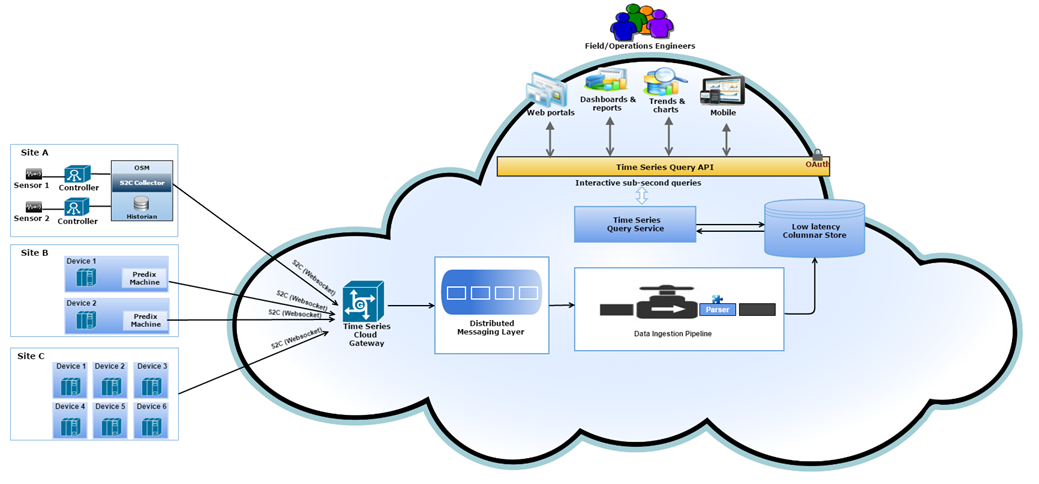Time Series Service Overview
About the Time Series Service
Time Series data is a sequence of data points collected at set time intervals over a continuous period of time. Sensor data is an example of a common way to generate time series data. A Time Series data store requires a measurement with a corresponding timestamp. The Time Series service provides an attributes field to include additional relevant details about that specific data point, such as units or site, for example, "Site":"SanFrancisco".
Time Series data can consist of regular data (data sampled at regular time intervals), or irregular data, for example, data that is recorded only when a certain event occurs (so always at random times).
The Time Series service provides the following benefits:
- Efficient storage of time series data.
- Indexing the data for quick retrieval.
- High availability so you can access and query your data from anywhere via HTTP.
- Horizontal scalability.
- Millisecond data point precision.
| Component | Description |
|---|---|
| Data Ingestion | The data-ingestion layer provides the ability to ingest real-time streaming data. |
| Data Query | The query API allows you to query data, with support for grouping of data points by tags, time ranges, or values, as well as aggregations. You can also filter by attributes to narrow your results. |
The below high-level architecture diagram shows different ways you can send data to the Time Series service for ingestion, as well as how users can interact with the query service.

- Site A – Historian
Sensors produce time series data associated with a tag name and send it to Historian for storage and management. S2C subscribes to tags and collects generated data from those tags only. S2C requests a web socket connection from a gateway application that is used for data ingestion.
-
Site B – WebSocket River utility
The WebSocket River establishes a connection when you first attempt a data transfer and keeps that channel open for as long as possible. Each data transfer verifies that the websocket connection is open. If the connection has been closed, the service opens a new connection. For more information about WebSocket River, see WebSocket River.
To communicate with the Time Series gateway, the data must be structured as shown in tss-using-service.html#concept_0449dd2d-724f-4fd1-b49c-038886b155a5.
- Site C – Direct WebSocket connection
Devices use an application to communicate directly with the websocket.
Additional Information
Exploring Time Series Tutorials